By carefully selecting elements from my pervious samples and gathering more materials I have been able to explore and develop my cover ideas further before producing my final 2 coverings. All experimentation and final outcomes have been made through fusing and bonding materials with heat.
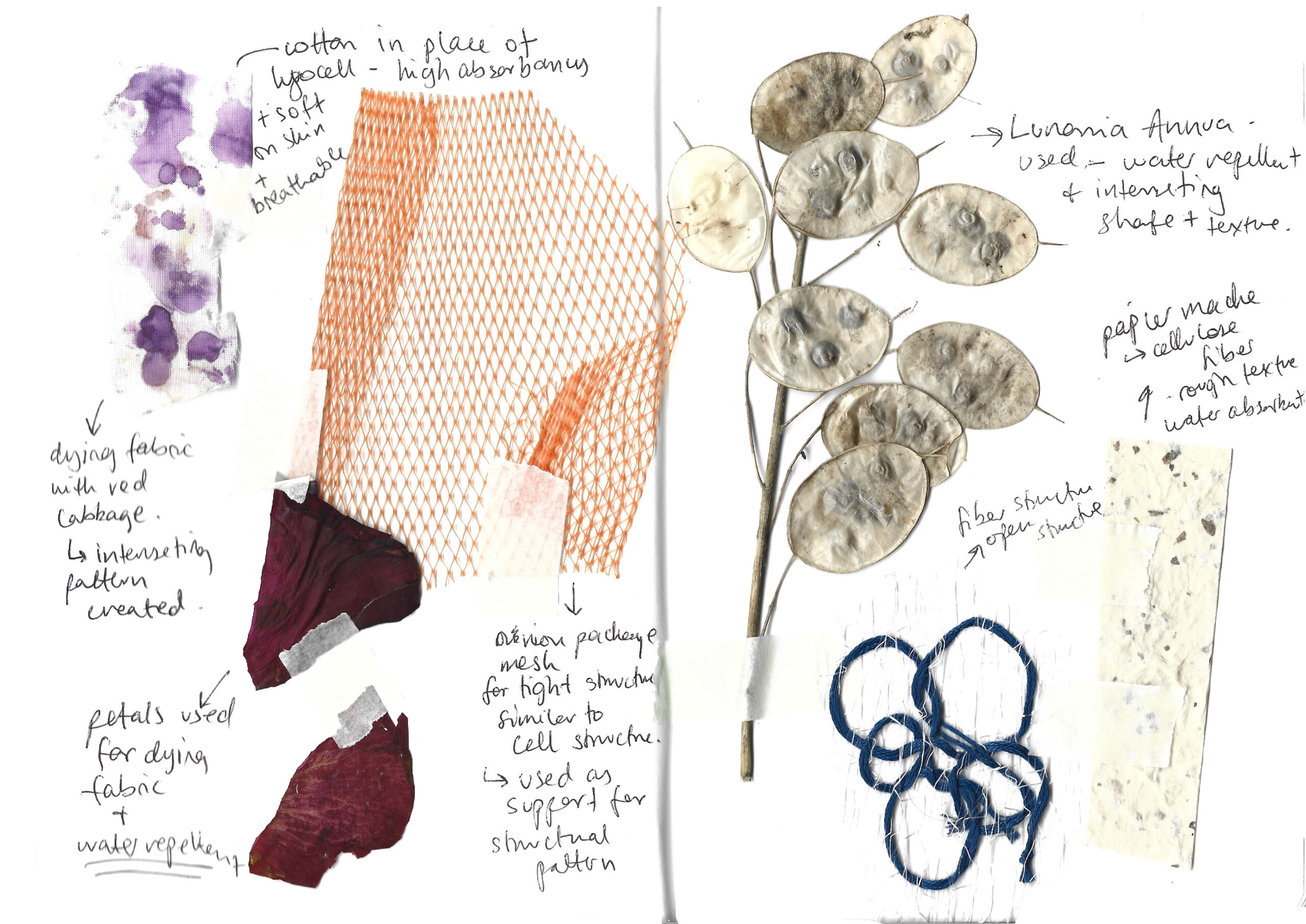
Materials collected for final samples in addition to our material pack.
Testing materials

Familiarising myself with some of the materials collected for my final samples and coverings
I thought it would be interesting to stain my fabric with red cabbage and rose petals as they are natural substances – in relation to ‘cellulose’ , keeping in mind that natural fibers and dyes work best for skin with eczema and I wanted to explore the colour purple as it was considered in my initial colour palette for this project in association with stress relief.
Week 6 Sample Board
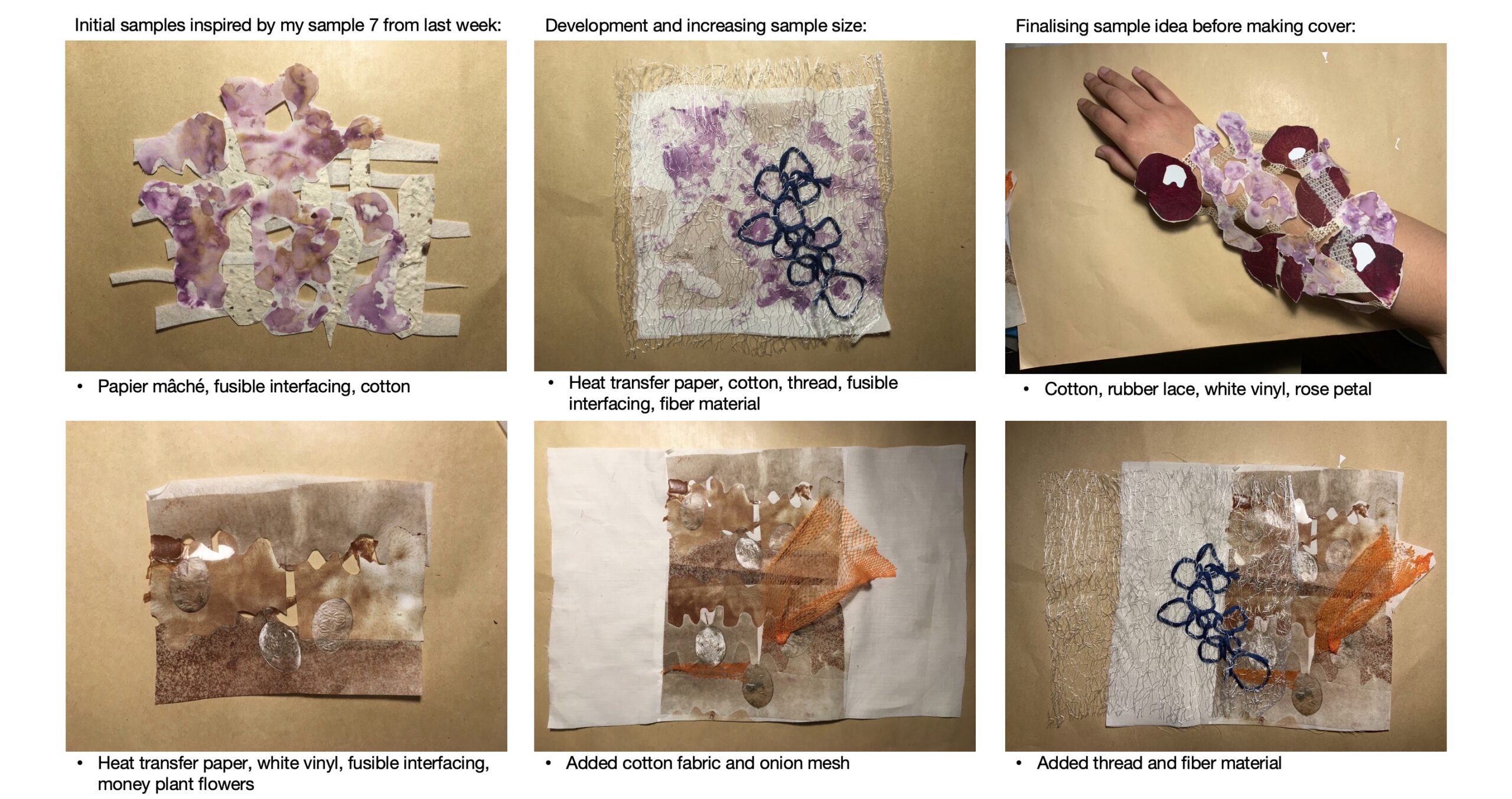

Image showing drawing development into sample
The image above shows my main sources of inspiration for my developed samples. The bottom left shows the chemical structure of cellulose being turned into simplified shapes which influence the design of cover 2 while the top right shows the structural pattern of week 5, sample 7 being used in my development.
Developing Samples from week 5
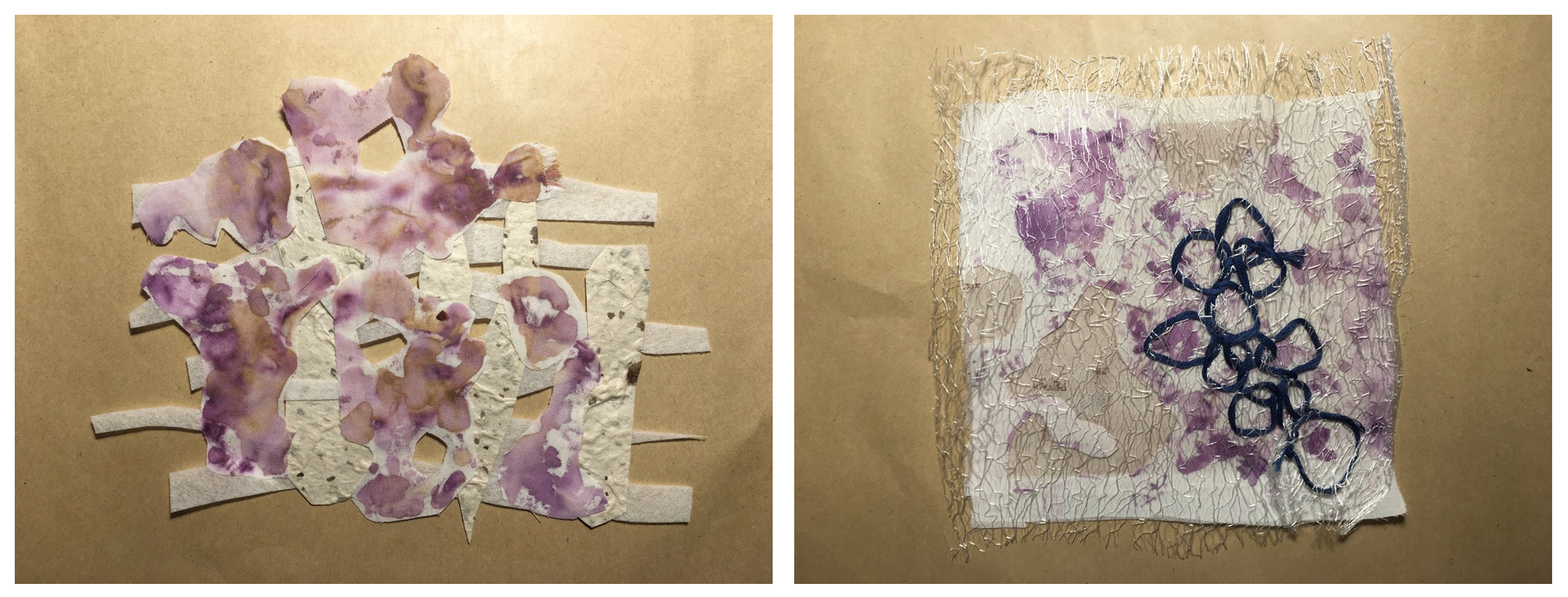
Image showing sample 1 and 2 of week 6
These samples show the development of Week 5, sample 7 structural design while exploring new materials. I really liked the idea of joining larger shapes together with thinner strips to create a more structural look, so I explored this design approach from sample 7 further.
I wanted to explore the use of papier mâché for added texture and because of its link to ‘cellulose fiber’. It is also a highly absorbent material which is a necessary function for my cover.
The second sample shown in the image explores the layering of left-over dyed cotton fabric and coloured cotton fabric using the heat transfer paper and an added layer for structural pattern.
Finalising Idea for Cover 1
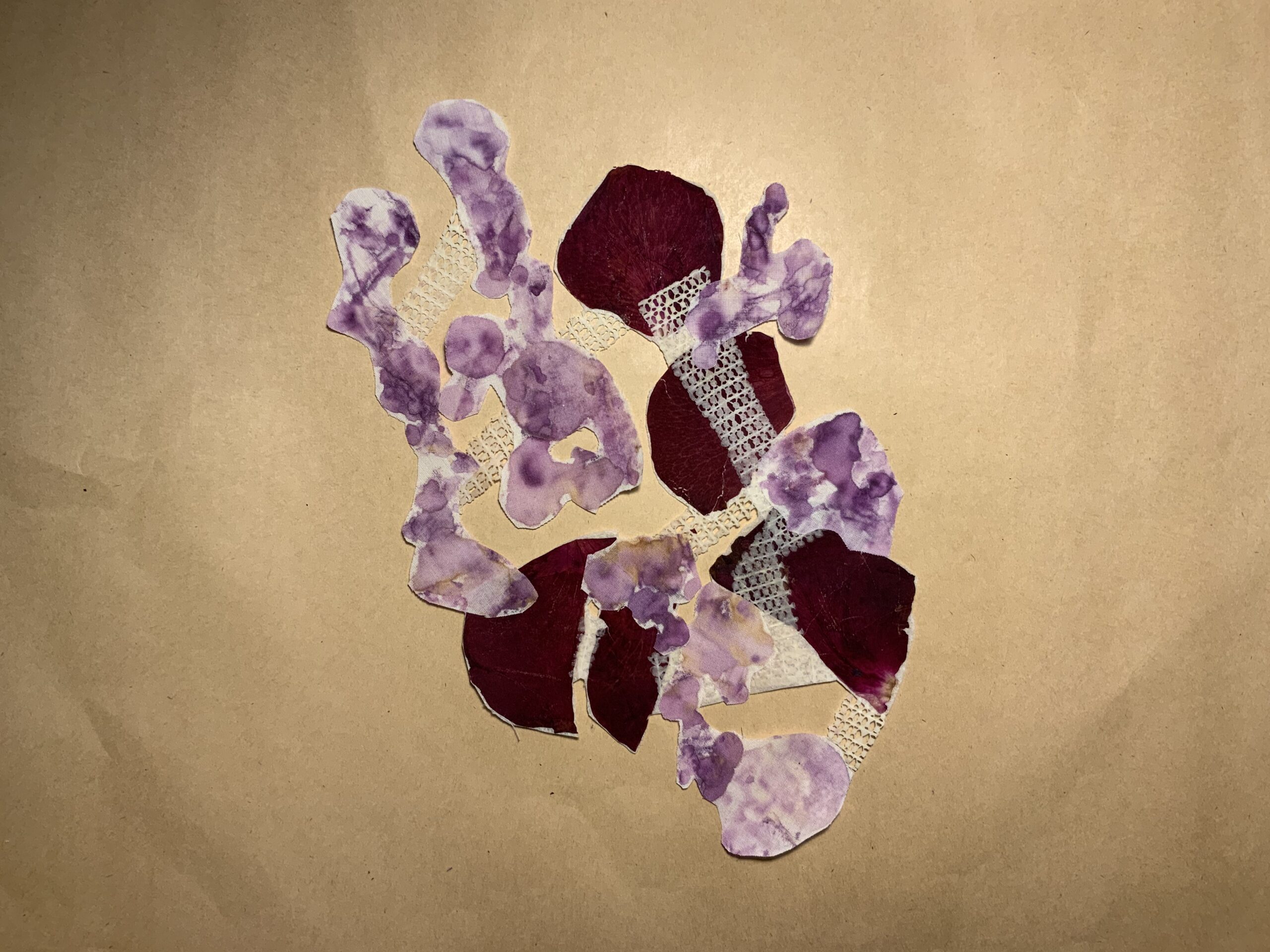
Image showing sample 3
Further development from sample. I wanted to create a more obviously structured piece. I fused the materials together using heat, rubber lace and fusible interfacing. The structure has been lined with cotton fabric to avoid other materials being in contact with the skin. I have included rose petals in this sample for colour, added structure and for the function of repelling water.
Final Cover 1
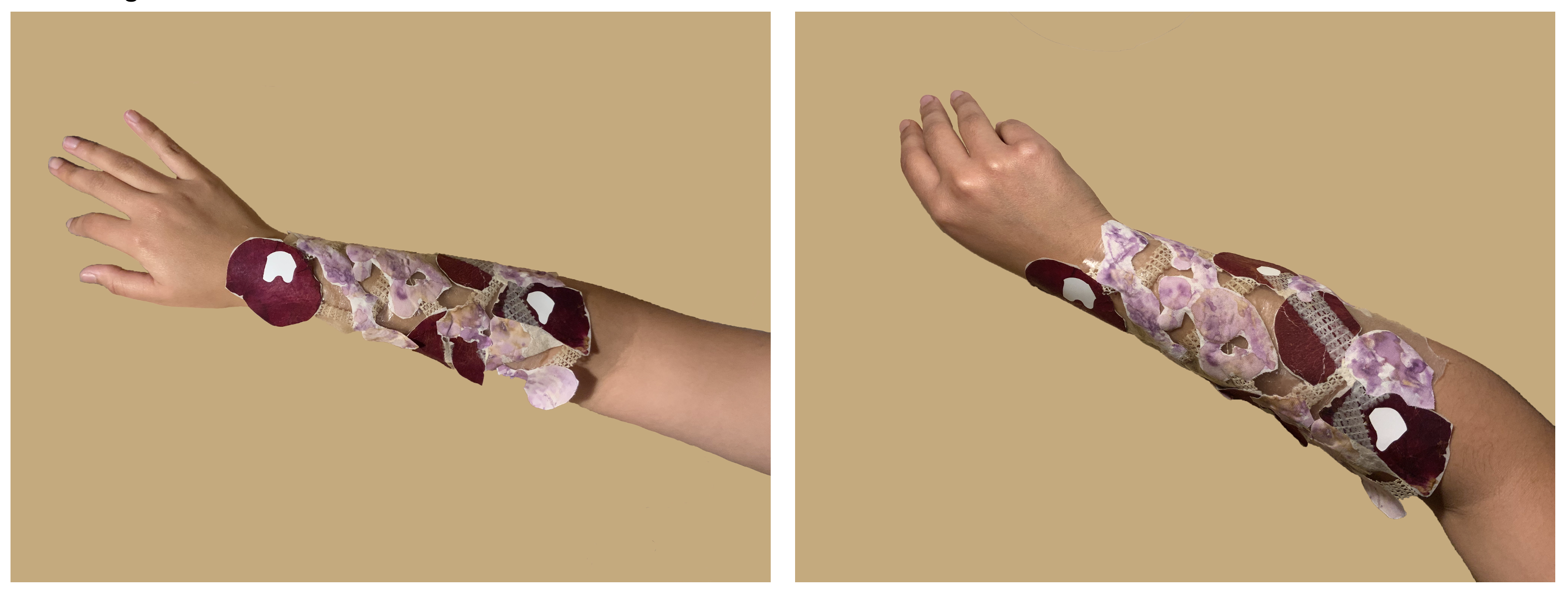
Image showing final cover 1
This covering was challenging to wear so I added an extra layer of peva plastic to hold the materials in place when wrapped around the arm. The peva adds to the covering’s waterproof quality. Overall the covering is light, easy to wear and flexible. Its cotton lining is essential to prevent agitation of the skin, it is breathable and is very water absorbent and therefore, practical for school activities which cause sweating. Its water repellent quality is useful for keeping the skin dry on a rainy day or stopping water from splashing when washing hands. Its open structure means incase of getting wet, the cover will dry quicker. The structural pattern is random, fun and the colour choice is due to the association purple has with stress relief. The rose petals also add a very lovely, smooth tactile quality while the rubber lace has a more textured feel. These textural qualities were also considered in terms of stress relief.
Developing Samples from week 5
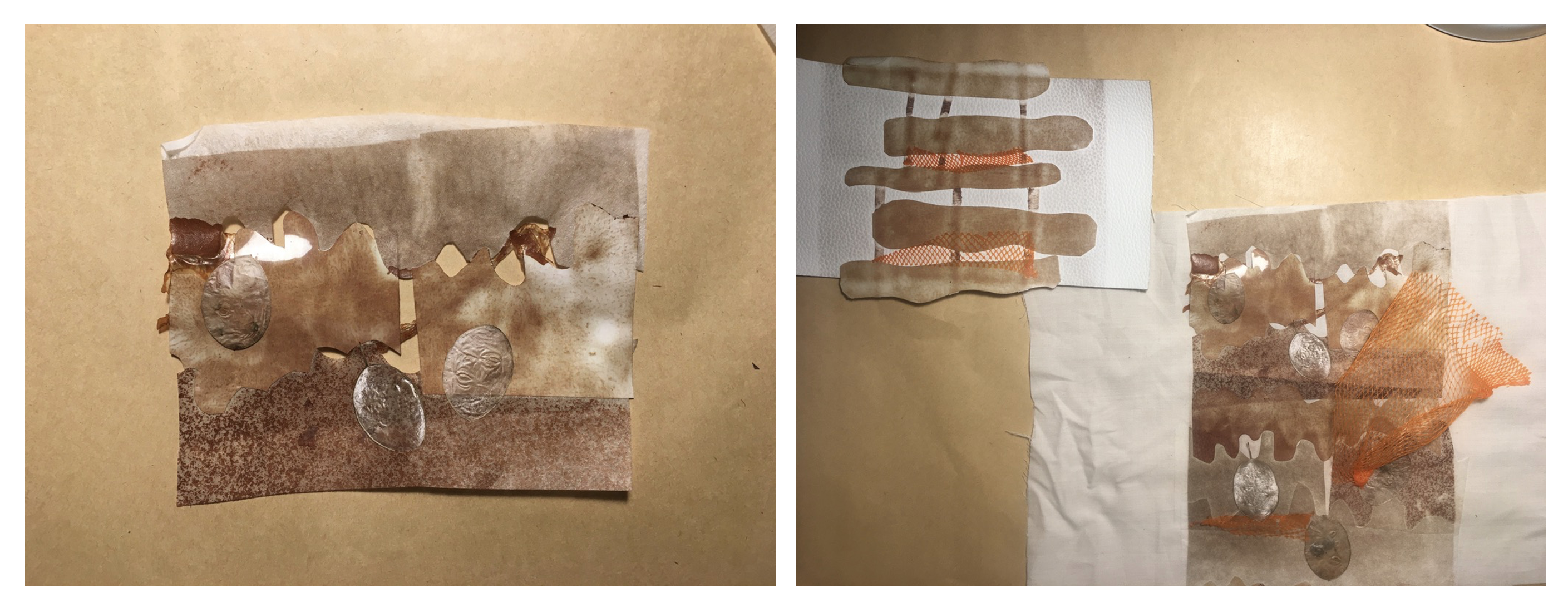
Image showing sample development for cover 2
Direct development of week 5, sample 7 – using same materials (while vinyl, heat transfer paper, onion mesh ) and same method of fusing however, I have altered my pattern structure based on the sketch of simplified cellulose shapes shown earlier. The white vinyl gives the covering a waterproof quality. The Lunaria annua is water repellent as well and adds structure and texture to the covering. In place of white leatherette I used cotton as my base fabric making it breathable and water absorbent.

Final Cover 2
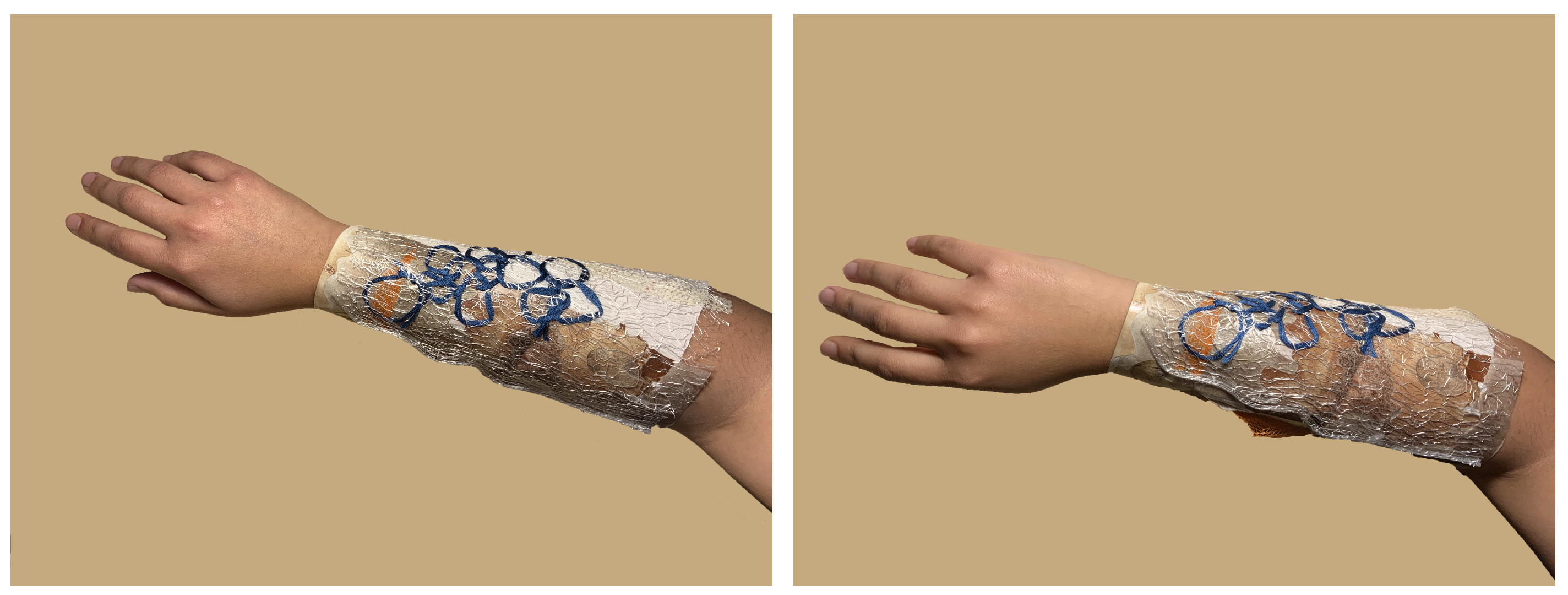
Image showing final Cover 2
Again using cool, calming, natural tones with a pop of colour. I chose to create an organic, wavy structural design as I found the more grid like structures as explored in week 5, sample 5 was not as soft and playful as I wished for my designs to be. The orange and blue combination in this covering was developed from my initial research on colours associated with stress relief. The colour from the heat transfer paper is subtle and good for not attracting too much attention if worn under school uniform. Overall, this cover is breathable, water absorbent and repellent and sturdy, making it a good protective layer as well.
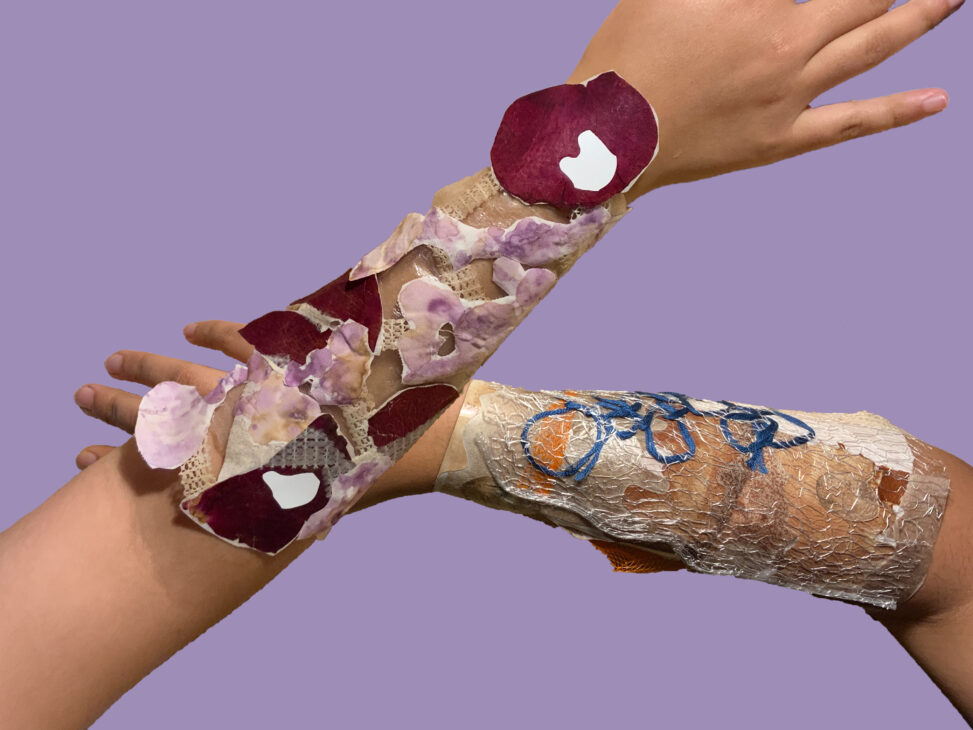


Leave a Reply